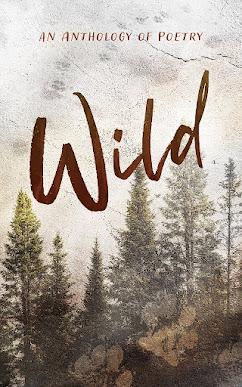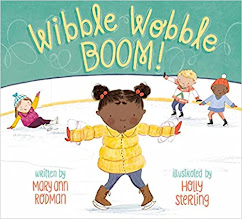In
1973, a man named Mr. Nadeau wrote beloved children’s book
author E.B. White requesting
inspiration about humanity’s future.
Mr. Nadeau’s world view was bleak and hopeless.
As
Maria Popova wrote in her Marginalian blog’s introduction to
the letter, which
follows, Mr. White’s response “endures as a
spectacular celebration of the
human spirit.”
North Brookline, Maine
30 March, 1973
Dear Mr. Nadeau:
As long as there is one upright man, as long
as there is one
compassionate woman, the contagion may spread and the
scene is
not desolate. Hope is the thing that is left to us, in
a bad time. I shall get
up Sunday morning and wind the
clock, as a contribution to order and
steadfastness.
Sailors have an expression about the weather:
they say, the
weather is a great bluffer. I guess the same is true of our
human
society — things can look dark, then a break shows
in the clouds, and all is
changed, sometimes rather
suddenly.
It is quite obvious that the human race has
made a queer
mess of life on this planet. But as a people we probably
harbor
seeds of goodness that have lain for a long time
waiting to sprout when the
conditions are right. Man’s
curiosity, his relentlessness, his inventiveness,
his ingenuity
have led him into deep trouble. We can only hope that
these same
traits will enable him to claw his way out.
Hang on to your hat. Hang on to your hope.
And wind
the clock, for tomorrow is another day.
Sincerely,
E. B. White

Alas, hanging on to Hope is easier said than
done, in our Real
World as well as in our Children’s Book World.
A group effort is oft required.
With that truth in mind, I invited five
children’s book writers I’ve
had the honor and Good Fortune to coach and teach
to share
One Golden Nugget that kept them keepin’ on… until they
secured this
past year representation by a literary agent.
Look for each of their names on an upcoming
children’s book
cover!
· Becky Hohensee,
represented by Essie White of the
Storm Literary Agency, lives in Houma,
Louisiana and
writes picture books.
Becky wishes she’d
spent less time revising one manuscript
for several years, even though it was
the one story she needed
to tell. “It
zapped my creativity for a long time. Write a story,”
she advises, “share it when you believe it’s ready and let it go.
Work on
something new. Exercise your writing muscles. And
don’t forget to reward
yourself every now and then.”
· · Chicago-area picture book
writer and middle grade novelist
Sonya Kenkare signed with the 75th
agent she queried,
Jackie Kruzie of Focused Artists.
“Never give up,” she
shares, “and keep batting at the fences.
All the rejections should be worn as a Badge of Honor. 😊”
· · Sara Crowe of Sara Crowe Literary represents Christal Presley
of Abingdon, Virginia, and
her bounty of picture books.
“Whatever genre you’re
writing in,” Christal shares, “spend
equal time READING in. For reading in the
same genre shows
you all the possibilities!”
· Melanie Uteg
lives in Lake Forest, Illinois, writing chapter
books, plotting a middle grade
book and reviewing bi-monthly
on her blog picture books, chapter books and
middle grade
books that feature the best of science, humans, nature and
communities. She recently signed with Tina Schwartz who
founded The Purcell Agency.
“I believe all children
matter,” Melanie responded. “Their
hearts. Their minds. Their voices. I believe
getting to that core
is important as you pursue your path towards publishing.
Get
out there and meet people – share your story and share your
purpose.”
· Fiona Wong
of Los Angeles, represented by Ellen Goff at
HG Literary writes picture books,
chapter books and middle
grade.
“Be
curious,” she shared. “Take
opportunities to learn from
industry professionals, even
if they’re discussing genres, craft
topics or age categories outside your
focus. Hearing
diverse
opinions and experiences can enrich your understanding of your
own
craft, purpose and journey as a writer.”
· And how could I not
invite my fellow TeachingAuthor blogger
and writer of fiction and
nonfiction, Carmela Martino, to
share her Golden Nugget?! She,
too, secured literary
representation this past year with Anjanette Barr of
Dunham,
Literary, Inc.
Carmela admitted it
was “a stubborn belief that the stories I was
working on were worth sharing,
and that they deserved to be in
the world, one way or another.”
She confessed she was
“so relieved and heartened to finally find
an agent who agreed with her!”
fe I offer buckets of Hoorays! and Hurrahs! to our fellow
children’s book creators for both keepin’ on AND
sharing a
Golden Nugget to keep US keepin’ on.
Hoorays! and
Hurrahs! hasten Hope.
I IMHO: Second Chances help us hang on to that
Hope.
And GOOD NEWS! The Andrea Brown Literary
Agency is
offering such an opportunity – the ABLA Second Chance!
“At ABLA we take pride in our collaborative
approach to
agenting and we often share queries internally when we
believe a colleague is a better fit for the material.
However, if a creator would like another
opportunity to have
their project considered by ABLA after their first choice
agent
passes, we invite you to submit your work to the
Second Chance Inbox. All our agents have
access to this
inbox and will regularly look through it to discover new
material! If an agent finds something they are interested in,
they will reach
out to that creator directly.”
Click here to learn the details so you can
grab this Do Over.
Thanks to former fellow TeachingAuthor
blogger Laura Purdie
Salas for hosting today’s Poetry Friday at Poems forTeachers.
Laura, too, deserves an Hooray! and Hurrah!
for her newest
picture book– Line Leads the Way (Capstone, 2024).
Here’s to Hope and our hanging on!
Esther Hershenhorn




































